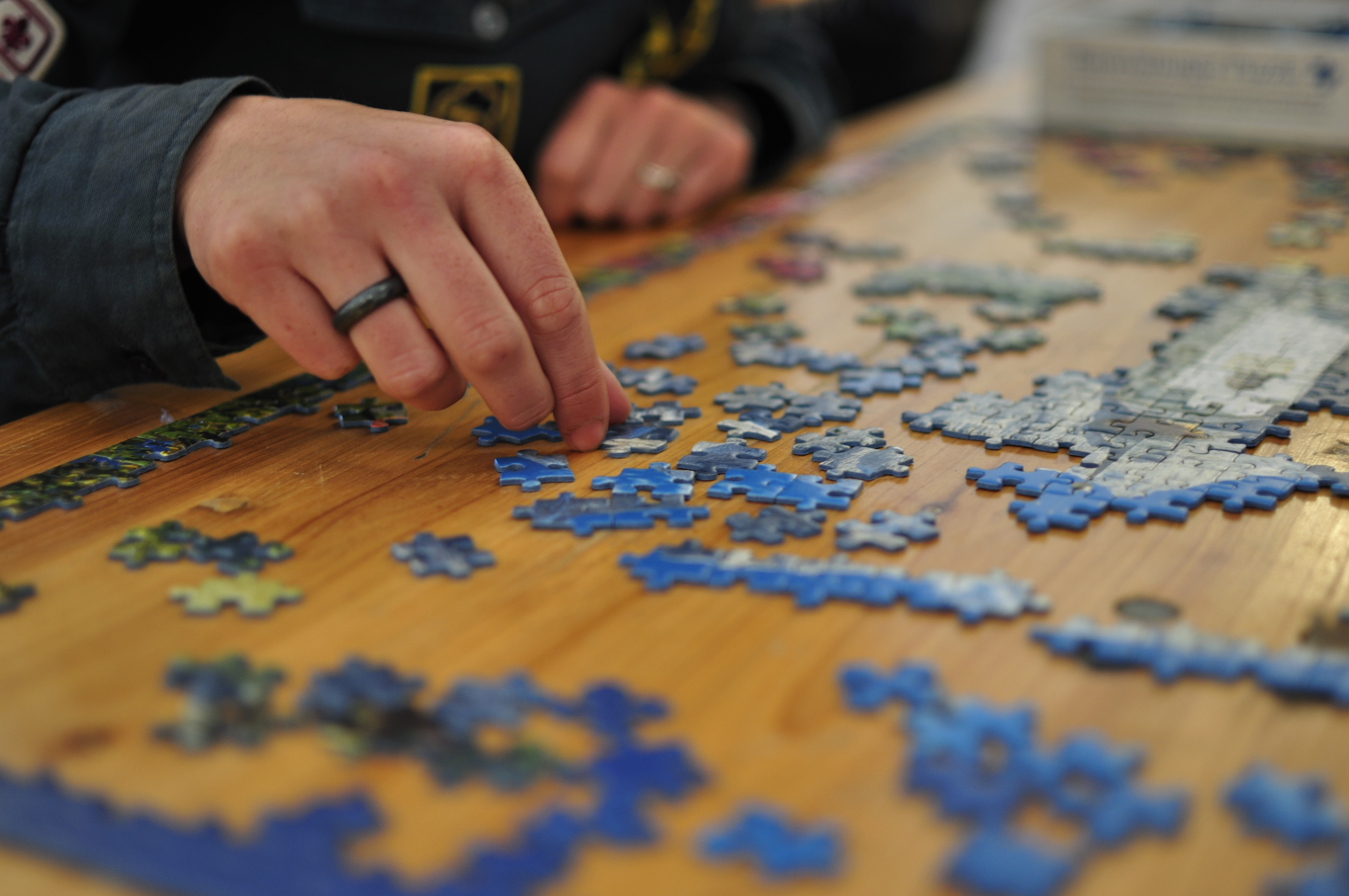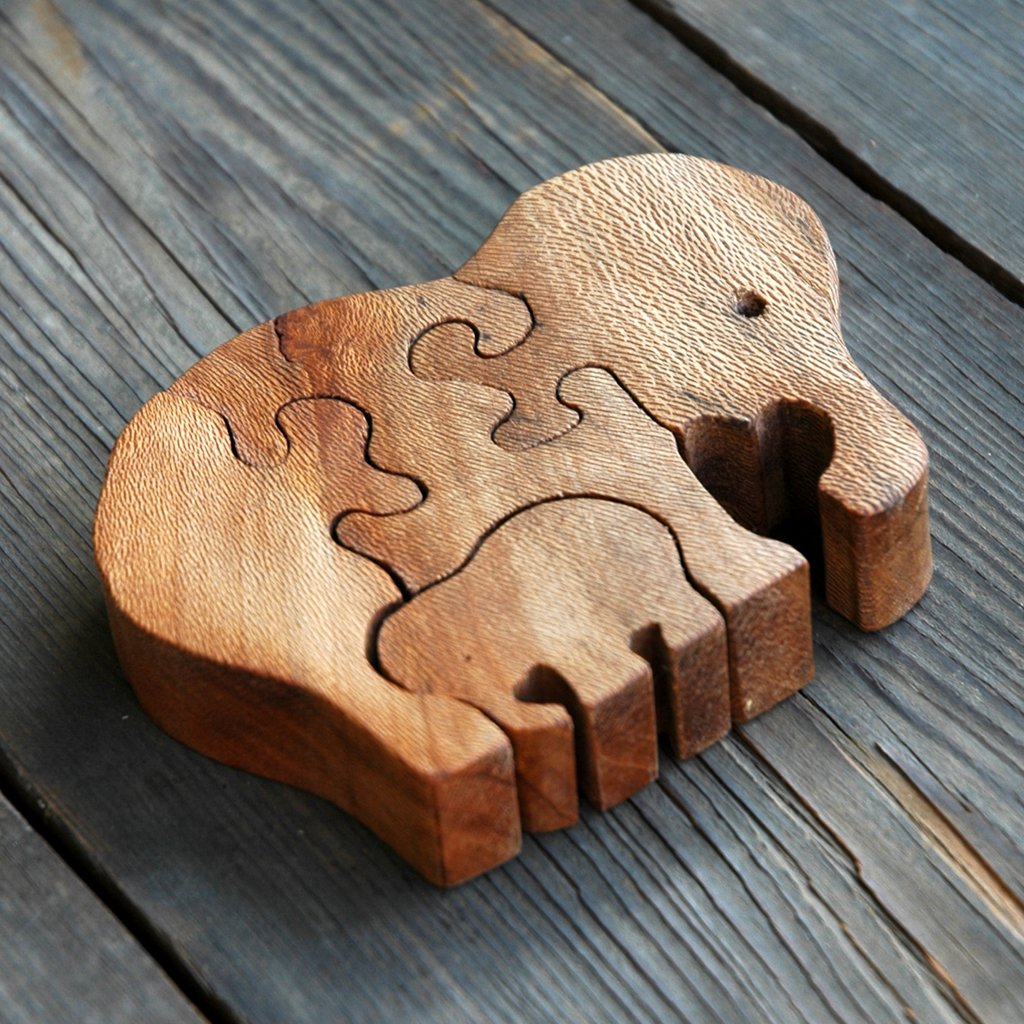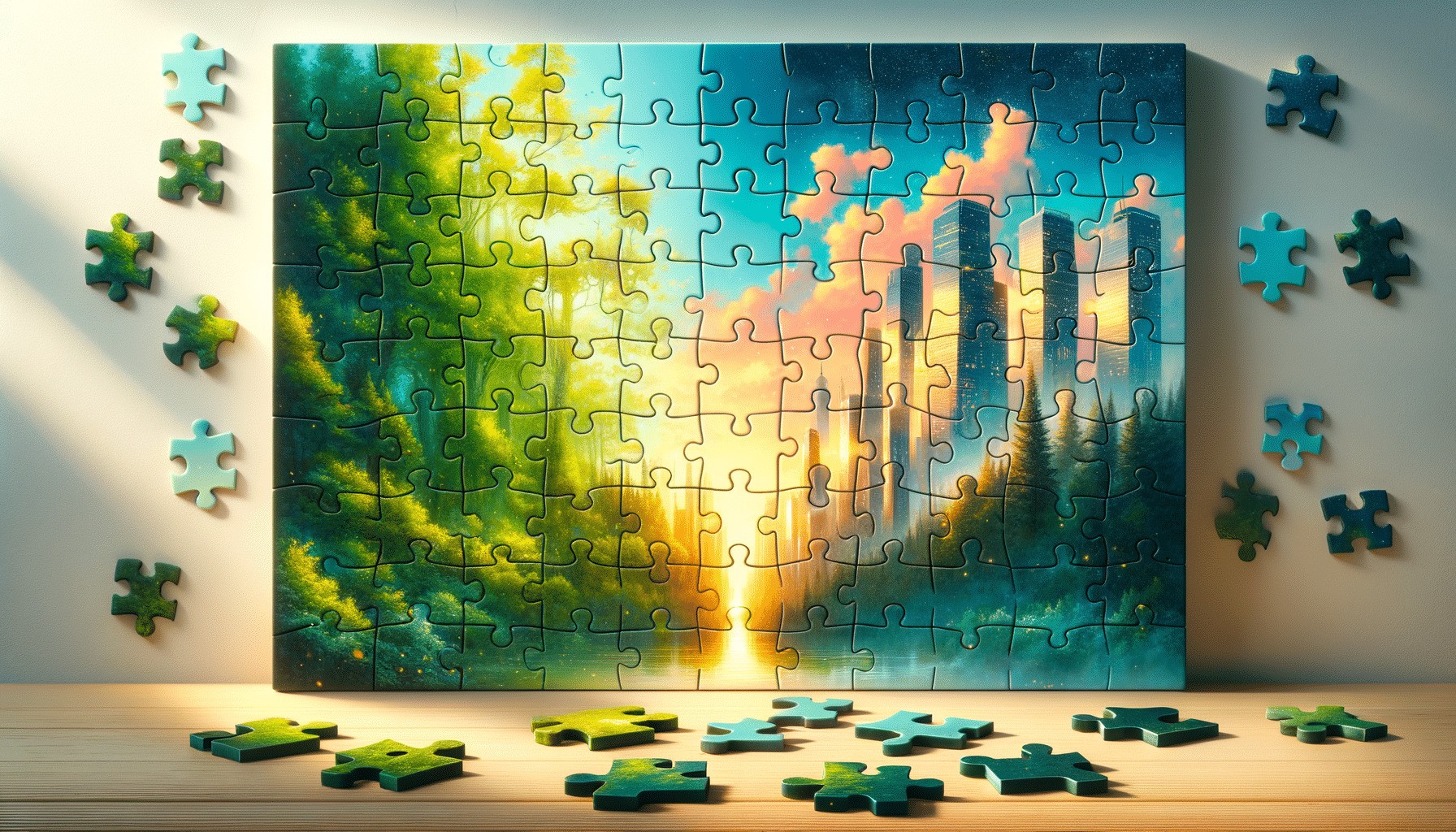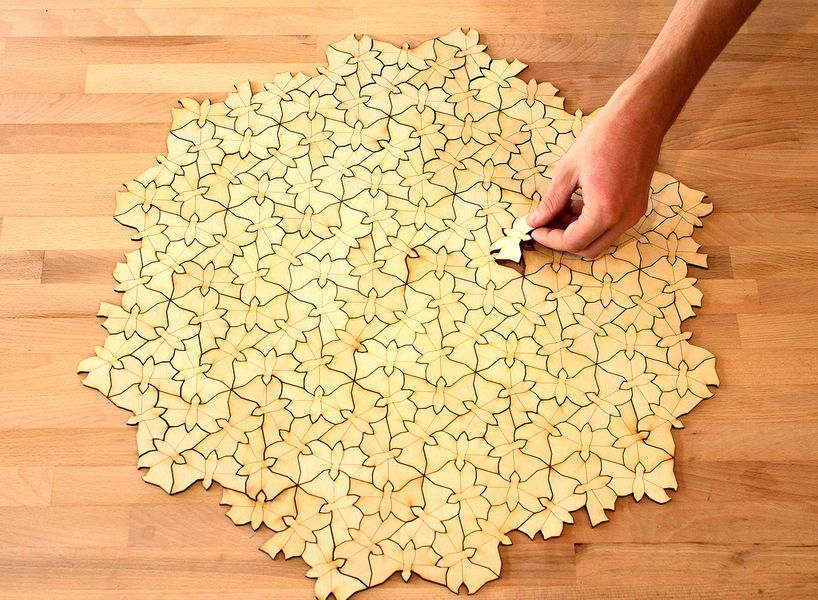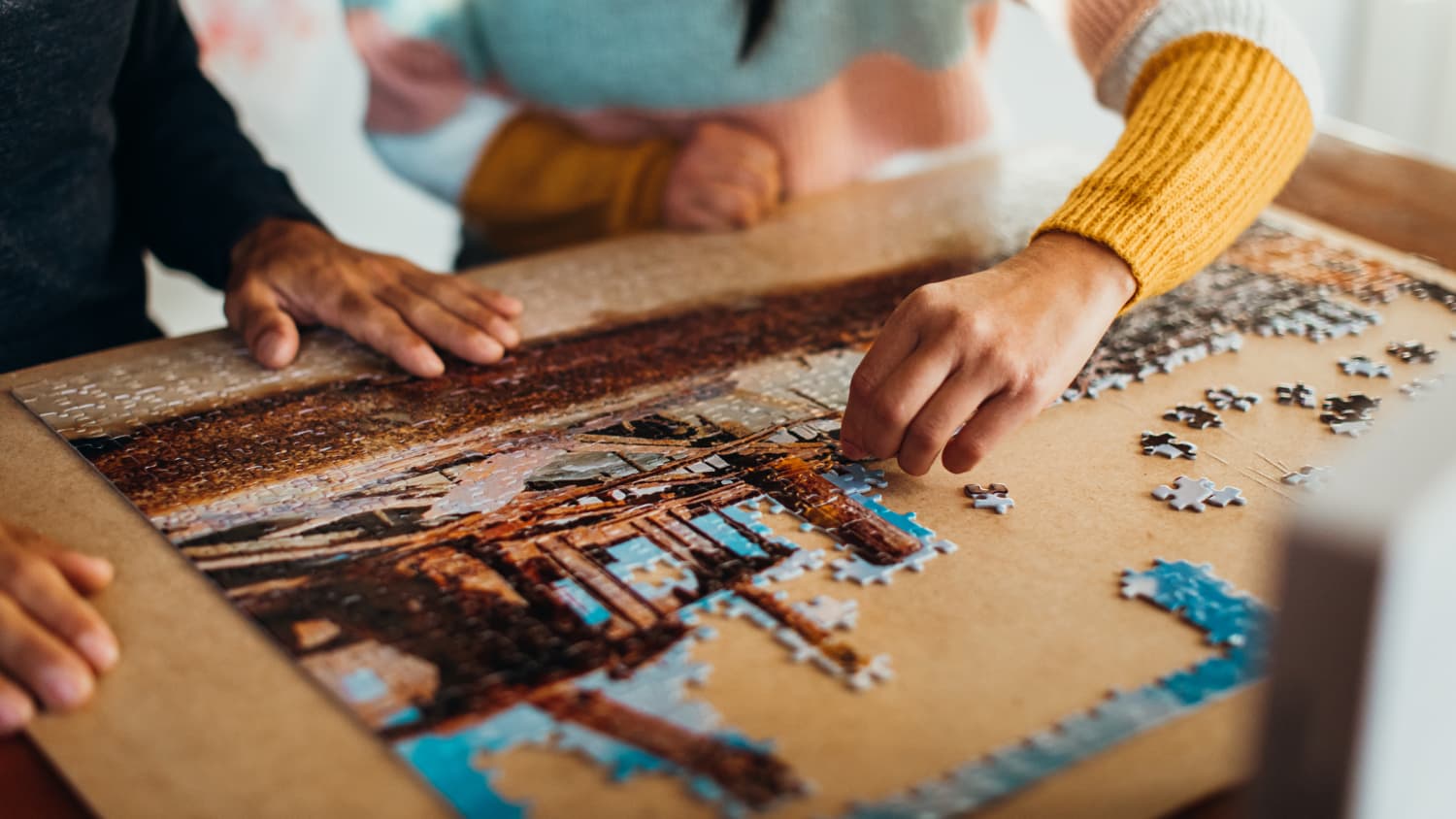How Jigsaw Puzzles Boost Brain Power And Cognitive Skills
From classic cardboard to intricate 3D models, the world of jigsaw puzzles has something for everyone. Ready to find your perfect fit?
Mar 02, 202538.9K Shares518.8K Views
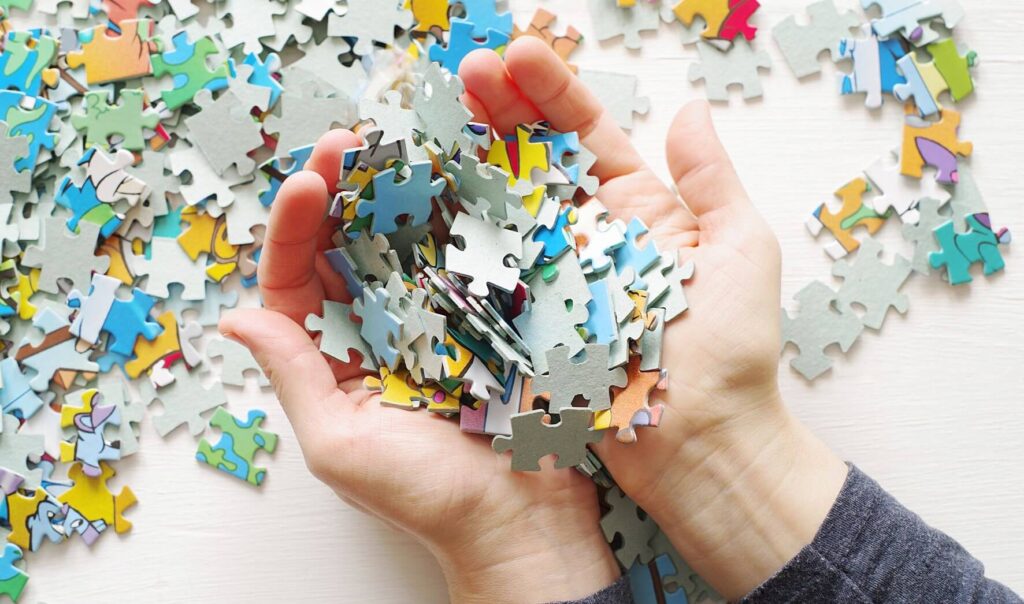
For generations, jigsaw puzzleshave thrilled people because they provide the ideal balance of difficulty, imagination, and leisure. Puzzles encourage us to slow down and partake in an activity that calms the soul and sharpens the mind, perhaps you're assembling an appealing landscape, a difficult 3D model, or a customized masterpiece.
We'll go fully into the realm of jigsaw puzzles in this guide. This article will provide you all the information you need to understand this age-old pastime, from its unique beginnings to professional advice on how to solve it like a pro.
The Fascinating History Of Jigsaw Puzzles
Jigsaw puzzles trace their origins back to the mid-1700s. John Spilsbury, a London-based cartographer, is credited with inventing the first puzzle. His idea was simple yet ingenious: he mounted a map onto wood and cut it into pieces, creating a fun and educational tool for teaching geography. Over time, puzzles evolved into various forms, including complex puzzlesthat challenge enthusiasts with intricate designs and thousands of pieces, offering both entertainment and mental stimulation.
By the 19th century, puzzles had transitioned from educational tools to entertainment. Early puzzles were crafted from wood and painstakingly cut by hand, making them a luxury item. It wasn’t until the early 1900s, with the introduction of die-cutting techniques and cardboard materials, that jigsaw puzzles became affordable and widely accessible.
The 20th century saw puzzles rise to global fame, particularly during the Great Depression when they became a cost-effective way to pass the time. Today, innovations like 3D puzzles, digital puzzles, and custom designs continue to push the boundaries of this beloved pastime. Enthusiasts can now enjoy a variety of options, including top puzzle games, which combine traditional elements with modern technology to provide engaging and challenging experiences.
Benefits Of Jigsaw Puzzles
1. Relaxation And Stress Relief
Solving puzzles provides a calming effect on the mind by promoting mindfulness. The process of focusing on shapes and colors reduces cortisol, the stress hormone, and encourages a meditative state. It’s an excellent activity to unwind after a hectic day.
2. Mental Stimulation
Jigsaw puzzles engage the brain by activating both hemispheres. The left side handles logical thinking, while the right side works on creativity and visualization. This dual engagement improves memory, concentration, and problem-solving skillsover time.
3. Improved Visual-Spatial Skills
Piecing together a puzzle enhances the ability to visualize spatial relationships. This skill is especially useful in professions like architecture, engineering, and design. It also benefits tasks like navigating maps or arranging furniture.
4. Boosted Problem-Solving Abilities
Puzzles require a step-by-step approach to identifying patterns and fitting pieces together. This strengthens critical thinking and decision-making skills, which are transferable to real-life problem-solving scenarios.
5. Enhanced Focus And Patience
Working on a puzzle requires sustained attention and perseverance. Completing a challenging puzzle teaches patience and the ability to concentrate on long-term goals without immediate gratification.
6. Social Connection And Teamwork
Collaborating on a puzzle is a fun way to build relationships. It encourages teamwork, communication, and a shared sense of achievement. Group puzzling can be a bonding activity for families, friends, or even coworkers. For enthusiasts seeking a challenge, best puzzle games for adultsoffer a perfect mix of complexity and entertainment, making group sessions even more engaging and rewarding.
7. Creative Expression And Art Appreciation
Jigsaw puzzles often showcase beautiful artwork, ranging from landscapes to abstract designs. Completing one allows you to engage with and appreciate artistic details, and many choose to frame their puzzles as personalized art pieces.
8. Memory Improvement
Remembering where specific pieces fit requires recalling shapes, colors, and patterns. This active memory recall strengthens short-term memory, making puzzles an excellent activity for both children and older adults looking to maintain cognitive health.
9. Screen-Free Entertainment
In an age dominated by screens, puzzles offer a refreshing alternative. They provide hours of entertainment without relying on digital devices, promoting healthier habits and reducing screen-induced eye strain.
10. Mental Health Benefits
Completing a puzzle triggers the release of dopamine, the "feel-good" neurotransmitter. This boosts mood, enhances motivation, and provides a sense of accomplishment, making puzzles a great tool for mental well-being.
Types Of Jigsaw Puzzles And Their Unique Appeal
1. Traditional Cardboard Puzzles
Traditional cardboard puzzles are the most commonly available type and appeal to a broad range of puzzle enthusiasts. They come in varying piece counts, from beginner-friendly 100-piece sets to massive 40,000-piece masterpieces designed for experts.
These puzzles are lightweight, easy to handle, and typically made from affordable materials, making them accessible to people of all ages and budgets. Cardboard puzzles often feature high-quality prints with vibrant colors and intricate details, showcasing themes like landscapes, animals, abstract art, and more. Their popularity stems from their versatility and practicality, as they are easy to store and work on without requiring special tools or setups.
2. Wooden Puzzles
Wooden puzzles are prized for their durability and premium feel. Crafted from high-quality wood, these puzzles often feature precisely cut pieces that fit together seamlessly. Wooden puzzles are a favorite among collectors and enthusiasts who value the craftsmanship and unique designs that many brands incorporate.
One standout feature of wooden puzzles is the inclusion of whimsical pieces, custom-cut shapes resembling animals, objects, or other fun patterns. These add an extra layer of charm and intrigue to the puzzling experience. While they are more expensive than their cardboard counterparts, wooden puzzles are an investment in quality and longevity. They also make fantastic gifts for special occasions.
3. 3D Puzzles
3D puzzles take traditional puzzling to the next level by allowing you to build models with depth and dimension. Unlike flat puzzles, 3D puzzles let you create iconic structures like the Eiffel Tower, the Statue of Liberty, or even working globes and functional clocks.
These puzzles challenge your spatial reasoning and construction skills, making them particularly engaging for advanced puzzlers or those looking for a hands-on creative activity. 3D puzzles are often made from durable materials such as plastic or wood, ensuring stability in the final model. They are perfect for display once completed, serving as both a fun project and a decorative piece for your home or office.
4. Custom Puzzles
Custom puzzles add a personal and sentimental touch to the puzzling experience. With custom puzzles, you can transform a cherished photograph, a favorite piece of artwork, or a special memory into a one-of-a-kind puzzle. These puzzles are popular as personalized gifts for birthdays, anniversaries, or holidays, offering a unique way to celebrate meaningful moments.
Custom puzzles are available in various materials, including cardboard and wood, and can be tailored to different difficulty levels. They not only make the puzzling process more personal but also create keepsakes that you can cherish or display for years to come.
4. Specialty Puzzles
Specialty puzzles cater to niche interests and offer unique challenges that go beyond standard designs. Some popular specialty puzzle types include:
- Glow-in-the-Dark Puzzles: These puzzles feature designs that come to life in the dark, revealing hidden details or glowing patterns that add a magical twist to the experience.
- Irregular Shape Puzzles: Unlike traditional rectangular puzzles, these puzzles have unconventional edges and silhouettes, making them more challenging and visually striking.
- Double-Sided Puzzles: With images printed on both sides of each piece, double-sided puzzles offer double the challenge as you figure out which side belongs to the final design.
5. Digital Jigsaw Puzzles
With the rise of technology, digital jigsaw puzzles have gained popularity. These puzzles are played on smartphones, tablets, or computers and offer the convenience of puzzling without physical pieces. They often include features like customizable difficulty levels, virtual tools like zoom and hints, and a wide selection of images to choose from.
Digital puzzles are ideal for people who enjoy puzzling on the go or don’t have space for physical puzzles. Many apps even allow you to upload personal photos, making them a digital version of custom puzzles.
6. Magnetic Jigsaw Puzzles
Magnetic puzzles have pieces with magnetic backs that stick to metal surfaces like refrigerators or magnetic boards. These are great for people with limited space or families with children, as they can easily be assembled vertically without worrying about losing pieces. Magnetic puzzles are often smaller in size, making them a popular choice for travel or educational activities.
7. Puzzleball Puzzles
Similar to 3D puzzles, puzzleballs allow you to construct spherical designs. The pieces are curved and interlock to form a ball-shaped puzzle, which often features maps, globes, or themed artwork. Once completed, they can be displayed on a stand, adding a unique decorative touch to your home or office.
8. Augmented Reality (AR) Puzzles
AR puzzles merge physical and digital experiences. After completing the physical puzzle, you can use a compatible app or device to bring it to life with augmented reality features. For example, a completed puzzle of a castle might show animated knights and dragons when viewed through the app. These puzzles add an exciting interactive element and are particularly appealing to tech-savvy puzzlers.
9. Escape Room Puzzles
Inspired by escape rooms, these puzzles combine jigsaw elements with problem-solving and storytelling. As you assemble the puzzle, you’ll uncover clues, solve riddles, and progress through a narrative. These puzzles are designed to be immersive and often include extra materials like booklets, cards, or props.
10. Miniature Jigsaw Puzzles
Miniature puzzles feature smaller-than-usual pieces, increasing the level of difficulty and requiring precision during assembly. These are popular among expert puzzlers who enjoy a challenge. Once completed, they take up less space, making them ideal for compact displays.
11. Educational Jigsaw Puzzles
Designed for children or educational purposes, these puzzles often feature alphabets, numbers, maps, or scientific diagrams. They’re used to make learning interactive and engaging, helping children develop cognitive and motor skills while having fun.
12. Gradient Puzzles
Gradient puzzles showcase a spectrum of colors that blend seamlessly into one another. They lack traditional patterns or imagery, relying on subtle color transitions to challenge the puzzler’s attention to detail and patience. These puzzles are both visually striking and highly challenging.
13. Mosaic And Tessellation Puzzles
These puzzles feature intricate patterns and designs, often inspired by art, architecture, or geometric tessellations. They are visually stunning and require a different approach to assembly compared to traditional image-based puzzles.
14. Lens Or Optical Illusion Puzzles
These puzzles include images that play with perspective, depth, or optical illusions. They can be highly challenging as the designs appear to shift or change depending on how you look at them. Some also include holographic or lenticular printing for an interactive experience.
How To Choose The Right Jigsaw Puzzle For You
- Skill Level: Beginners should opt for smaller puzzles (300-500 pieces), while seasoned enthusiasts can handle puzzles with 1,000 pieces or more.
- Theme: Choose a theme that interests you; a theme that you are passionate about will keep you interested, if it is abstract art, nature, fantasy, or historical sites.
- Material: Decide between cardboard (affordable and practical) or wooden puzzles (luxurious and long-lasting).
- Size and Space: Ensure your workspace can accommodate the dimensions of the puzzle, especially larger ones that may require extended time to complete.
- Unique Features: If you’re looking for something unconventional, try 3D puzzles, glow-in-the-dark designs, or double-sided puzzles.
Expert Tips For Solving Jigsaw Puzzles
1. Organize Your Workspace
Choose a well-lit, clutter-free area with a flat surface. A dedicated puzzle board or mat can make the process easier and more portable.
2. Sort Pieces By Type And Color
Separate edge pieces from inner pieces, and group similar colors or patterns together. This speeds up the assembly process and reduces overwhelm.
3. Build The Frame First
Start by assembling the edges and corners. This provides a defined boundary and makes it easier to visualize the final image.
4. Focus On Sections
Identify distinct areas of the puzzle, such as specific patterns or color blocks, and work on them individually. This makes the process feel more manageable.
5. Take Breaks
Puzzling can be mentally taxing. Step away when you feel stuck and return with fresh eyes to spot connections you may have missed.
Creative Ways To Display Completed Puzzles
Once completed, your puzzle can transform into a cherished display piece. Here are some ideas:
- Frame It: Preserve your puzzle with glue, then frame it for a unique piece of wall art. This works especially well for puzzles with sentimental or aesthetic value.
- Glass-Top Table: Place your puzzle under a glass tabletop to create a functional and eye-catching centerpiece.
- Seasonal Rotation: Showcase puzzles that align with holidays or seasons, like snowy landscapes for winter or floral designs for spring.
FAQs
Why Are Puzzles Good For Mental Health?
Puzzles stimulate cognitive function, reduce stress, and promote mindfulness. They’re an effective way to relax while exercising your brain.
Can Children Benefit From Puzzles?
Absolutely! Puzzles help kids develop fine motor skills, improve hand-eye coordination, and enhance problem-solving abilities.
How Should I Store Unfinished Puzzles?
Use a puzzle mat or storage board. These tools allow you to roll up or move your puzzle without disturbing the pieces.
Are Custom Puzzles Worth It?
Custom puzzles add a personal touch and are great for special occasions. They’re perfect for commemorating memories or giving as heartfelt gifts.
How Do I Preserve A Puzzle For Framing?
Apply puzzle glue to the surface, let it dry completely, and mount the puzzle on a sturdy backing before framing.
Final Words
Jigsaw puzzles are an ageless way to challenge yourself, connect with others, and unwind. From the excitement of solving the puzzle to the fulfillment of showing off your masterpiece, each piece relates to a creative and mindful journey. Choose a puzzle today, and let the journey begin; one piece at a time.
Latest Articles
Popular Articles
